#Attendance management system
Text
In today’s fast-paced business environment, the demand for flexibility, scalability, and efficiency is paramount. One technological advancement that has significantly contributed to these demands is cloud computing. Cloud-based solutions have revolutionized the way businesses operate, offering a plethora of benefits that traditional on-premises systems simply cannot match. TrackHr, a leading work management and performance tracking app, leverages cloud technology to provide unparalleled advantages to its users. In this blog, we will explore the benefits of cloud-based solutions and how TrackHr is harnessing this powerful technology.
The adoption of cloud-based solutions is no longer a luxury but a necessity in today’s competitive business landscape. TrackHr’s integration of cloud technology exemplifies how businesses can leverage these solutions to achieve greater efficiency, scalability, and security. By choosing TrackHr, businesses not only streamline their work management and performance tracking processes but also position themselves for sustainable growth in a rapidly evolving market. Embrace the cloud with TrackHr and unlock the full potential of your business.
#Performance management app#Performance Tracker App#task management software#Performance Management System#employee management system#employee attendance app#attendance software for small business#online attendance system#performance management tools#attendance tracker app#attendance management system#attendance software#online attendance management system
0 notes
Text
Leveraging Performance Flags in TrackHr for Employee Performance and Self-Development
In the realm of employee performance and development, feedback is a powerful tool. When delivered effectively, it can drive motivation, foster growth, and enhance productivity. One innovative approach to providing continuous feedback is through the use of performance flags, such as the red, yellow, and green flags implemented in the TrackHr app. These flags serve as visual indicators of an employee’s performance status, offering a clear and concise way to communicate progress and areas for improvement. Let’s explore how these performance flags can be instrumental in both employee performance management and self-development.
Understanding Performance Flags
Green Flag: Exemplary Performance
A green flag is a symbol of excellence. It indicates that an employee is meeting or exceeding expectations in their role. This positive reinforcement can boost morale and motivate employees to maintain their high standards. For example, consistent green flags might be awarded for:
Meeting or exceeding sales targets
Delivering projects ahead of deadlines
Demonstrating leadership and teamwork
Yellow Flag: Caution and Room for Improvement
A yellow flag signals that there are areas where an employee needs to improve. It serves as a cautionary marker, encouraging employees to pay attention to specific aspects of their performance that require enhancement. Examples of scenarios that might warrant a yellow flag include:
Missing deadlines occasionally
Needing to improve communication skills
Requiring better time management
Red Flag: Critical Performance Issues
A red flag is a clear indicator of significant performance issues. It highlights that immediate attention and corrective action are needed. Red flags might be assigned for:
Consistently failing to meet targets
Displaying unprofessional behavior
Showing a lack of engagement or motivation
How Performance Flags Benefit Employee Performance

1. Clear and Immediate Feedback
Performance flags provide employees with immediate and clear feedback. This real-time communication ensures that employees are aware of their performance status and can take swift action to address any issues. Green flags reinforce positive behavior, while yellow and red flags draw attention to areas that need improvement.
2. Enhanced Accountability
By consistently monitoring and flagging performance, employees are held accountable for their work. This accountability fosters a sense of responsibility and encourages employees to take ownership of their performance and development.
3. Motivational Boost
Receiving a green flag can be highly motivating for employees. It acknowledges their hard work and dedication, encouraging them to continue performing at a high level. This positive reinforcement can lead to increased job satisfaction and a more engaged workforce.
4. Focused Development
Yellow and red flags help in identifying specific areas where employees need to improve. This targeted feedback allows for focused development plans, ensuring that employees receive the necessary training and support to enhance their skills and performance.
How Performance Flags Facilitate Self-Development

1. Self-Awareness
Performance flags help employees become more self-aware by providing regular feedback on their work. This self-awareness is crucial for personal growth and development. Employees can reflect on their performance, recognize their strengths, and identify areas for improvement.
2. Goal Setting
With clear feedback from performance flags, employees can set realistic and achievable goals. For instance, if an employee receives a yellow flag for time management, they can set specific goals to improve their efficiency and prioritize tasks better.
3. Proactive Improvement
Performance flags encourage employees to be proactive in their self-development. Knowing that their performance is being monitored and flagged, employees are more likely to take initiative to improve their skills and seek out opportunities for growth.
4. Constructive Feedback Loop
The use of performance flags creates a constructive feedback loop between employees and managers. Regular discussions about performance flags can lead to productive conversations about career development, training needs, and long-term goals.
Conclusion
Performance flags in the TrackHr app are more than just indicators of employee performance; they are powerful tools for fostering a culture of continuous improvement and self-development. By providing clear, immediate, and actionable feedback, performance flags help employees stay on track, motivated, and focused on their professional growth. Whether it’s celebrating successes with green flags, addressing areas of caution with yellow flags, or tackling critical issues with red flags, these visual markers play a crucial role in enhancing both individual and organizational performance. Embrace the power of performance flags to unlock the full potential of your workforce and drive sustained success.
0 notes
Text

5 Key benefits of An Effective Attendance Management System
An Attendance Management System reduces the number of errors that might occur while manually tracking attendance. It guarantees that attendance data is accurately recorded, which reduces errors and mistakes.
0 notes
Text

Advantages of Using An Attendance Management System for Your Business
The idea of implementing an attendance management solution is important in building a system that interacts well with the employees of the firm. Your top-notch HR management techniques for delivering the optimum operations value of a company rely on producing the best results in resource engagement. You can use an attendance management system to record an engaging employee experience in organizations. Integrated HR technology can also help you progress in the operations domain with the active assistance of employee management modules. Any automated HR system is capable of delivering digitization tactics that will add value to your overall business processes. However, the utilization of cloud HR software is the most preferable model for producing empowering operations management services that boost the holistic coverage of attendance system solutions.
0 notes
Text
Online Attendance Portal
Online Attendance
Welcome to the era of Online Attendance portals, a transformative force reshaping contemporary workforce management practices. This article aims to thoroughly examine the diverse benefits, versatile applications, and essential features of these portals, providing valuable insights into their educational impact on attendance management within the context of modern businesses.
Benefits of Online Attendance Portals
Efficient Time Tracking
Automated Compliance
Streamlined Payroll Integration
Data-driven Decision Making
Absence Management
Uses of Online Attendance Portals
Accurate Time Recording
Managerial Insights
Flexible Work Arrangements Support
Source Link
#attendance portal#online attendance#attendance management system#attendance software#attendance management#online attendance management system#attendance management software#attendance management system for employees#greytHR
0 notes
Text
Attendance Management Software in Bangalore
Tracking employee attendance is a basic part of workforce management. It assists associations with keeping up with functional productivity and encourages a positive workplace. Moreover, it additionally guarantees administrative consistency among the employees. How about we investigate why tracking employee attendance is fundamental and the advantages it brings to IT organizations?
#attendance management software#attendance management system#attendance management software in bangalore#attendance management software in hyderabad
0 notes
Text
Smart Employee Attendance Management Solutions
Smart Employee Attendance Management Solutions provide advanced tools to streamline and simplify attendance tracking. These systems offer features such as real-time monitoring, automated timekeeping, and seamless integration with payroll and HR systems. By utilizing smart technology, businesses can ensure accurate attendance records, reduce administrative workload, and improve overall efficiency. Our solutions are designed to enhance productivity and ensure compliance with labor regulations, making attendance management effortless and effective.
Visit
#Employee Attendance Management Solutions#attendance software#attendance tracking software#employee attendance management system#attendance management system#attendance management
1 note
·
View note
Text

Discover the best hr and payroll software. Streamline employee wage calculations, automate payments, and ensure compliance with tax laws.
0 notes
Text
Centralise Attendance in One Platform
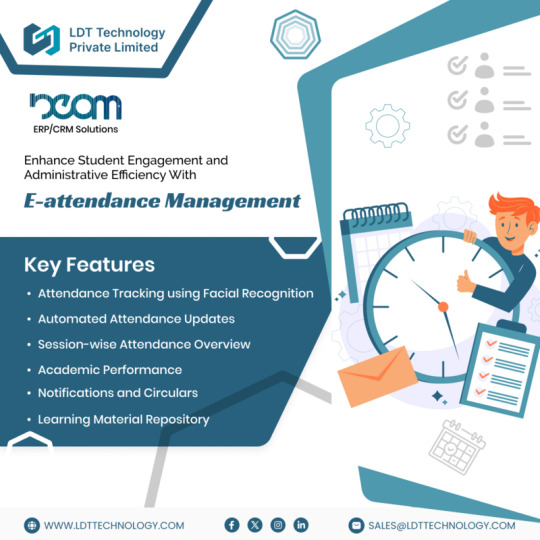
Do you find it complex to manage attendance manually? LDT Technology’s attendance tracking software is here to make operations easier for your institution. Your students can mark their attendance using facial recognition technology. Furthermore, it provides live updates and notifications related to the latest events, including parent-teacher meetings, exam schedules, and other announcements.
0 notes
Text
Biometric Attendance Management System
In the business world today, time translates to money.
The amount of time a person spends working for a particular business is equivalent to how much that person gets paid. It, therefore, has become extremely important to track the time every employee spends working on the tasksgiven to them. This is where the biometric time clock and attendance software comes into play.
The biometric attendance system is a great upgrade over the existing online time and attendance tracking systems in the market today.
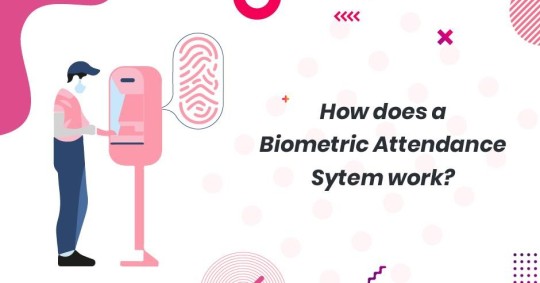
The previous systems weren’t foolproof as there were a lot of cases where the employees could log in for one another or in other words show a proxy attendance of a person who hasn’t entered the office.
To overcome these fundamental flaws the biometric attendance system came into action.
With a biometric scan, each biometric fingerprint becomes a unique entry code that can only be entered by one person. This means that a person who wants to proxy for another employee will not be able to do so as their biometric details won’t match.
How does a biometric system work?
A biometric attendance system as mentioned before makes use of an employees’ fingerprint to allow clocking in and clocking out of their workplace. Every employee’s fingerprint is first scanned and mapped out based on various coordinates defined within the system.
These coordinates are then plotted against a graph and stored in the system.Every time an employee places his or her finger, the coordinates are mapped and checked with the previous image and only if there is a match the entry is clocked.
It is almost impossible to duplicate a fingertip as several different coordinates can be mapped from a single finger and the most amazing thing is that each of these coordinates is unique and cannot be replicated from another fingerprint. This is the most significant advantage of using a biometric attendance system.
Biometric systems are secure
Because biometrics collect data from employees' retinas, fingerprints, faces, and other unique identification details, some businesses are hesitant to utilize biometrics for fear that the information will be misused or hacked, or in the worst-case scenario, the company will sell the information, as some of the social chat apps do. However, solutions like Time Dynamo are so safe that no hacker can get into them, which has inspired many businesses, large and small, to use it, and it proves that the data isn't sold. So, you can use the Biometric Attendance System without hesitation.
Things to keep in mind when using a biometric attendance system
Like any other system which is being introduced to the workplace, the biometric attendance system too has its own set of considerations that need to be taken care. There have been several questions that people have raised regarding a biometric attendance system, and it is essential that these are given its due importance. Here are some important considerations while using a biometric attendance system.
1. Safety of data
Fingerprints are unique to people and when someone needs to keep the storage of their fingerprints within a system naturally, there will be a lot of questions about the safety of it. If this data falls in the hand of miscreants, they can take a lot of advantage of it. Hence when looking for a good biometric attendance machine, it is of paramount importance to understand how the data is protected and kept safe within its storage system.
With the age of computers, it has become straightforward to steal data from systems; it is, therefore, prudent to ensure that the latest anti-theft software are installed along with the biometric attendance system.
However, the biometric attendance system is a step ahead of the existing systems in that it does not store any immediately identifiable personal information. While fingerprint scanning requires a high level of technology dependency, the data is in most cases safe from most common forms of theft.
2. Usability of the system
Like any other system in the workplace, the people responsible for the data and the functioning of the biometric attendance system have to be able to access the software associated with it easily. User-friendliness of the system is key to ensuring that the workplace adopts this system as efficiently and as early as possible.
The dashboards and the UX of the software have to be friendly and shouldn’t require the employees to be trained in it for a long time for it to be familiar. The software of the biometric attendance system also allows workplaces to ensure access to data whenever and wherever required. Employees and non-employees can be identified separately, and this can give you an overall sense of how many people enter the office on a regular, timely basis.
3. The technology used in the biometric attendance system
There are two types of technology that is used in a biometric attendance system. The most common one is the image-based system that captures the image of the fingerprint and stores it the same way. The coordinates are mapped from the image of the finger.
While this is less accurate, the technology is simple, and hence the cost of this type of biometric attendance system is relatively lower. The second type of technology that is used in a biometric attendance system is the capacitor technology.
This is a much more accurate version of biometric scanning, and this type of biometric attendance systems are used in larger enterprise companies that handle much sensitive data. The capacitive technology map the pressure points of the finger and map coordinates based on that giving the mapping a lot more accuracy compared to the image that needs unique algorithms to process it.
4. Cloud accessibility
Biometric attendance system today come with a lot of integrations. The software also has a mobile application that allows employees to clock into work from anywhere in the world.
This is important especially when it comes to workplaces that have a lenient remote work option. Several startups today have come up with perks like remote jobs that don’t need an employee to be present physically in the office and these systems ensure that even these people can clock in and show their employers that they start working on time.
Why Biometric Attendance System is important?
Commercial applications began using biometric attendance system to control the physical accesses of the buildings. All these implementations are conducted to prevent the risks of fraudulent activities and offer a secure environment to the clients and employees.
The main motive to implement these technologies in companies was to physically and logically restrict the authorized access to valuable assets. There are several companies who came up with the fingerprint sensor technologies and used it in their offices to safeguard their assets and resources.
Control the Access of Employees and Non-Employee
This biometric attendance management system not only tracks employees' schedules but also offers the added benefit of controlling access to employees and non-employees. To elaborate, according to company policies, not every employee is permitted to visit every job area. As a result, such restricted employees will be denied access to the area while they provide their identification to the attendance machine, as compared to companies that use ID cards, which are prone to be stolen by outsiders or restricted employees who can take advantage of restricted work areas.
Which are the industries preferring biometric attendance system?
Biometric attendance system can be used in any industry where data validations, assets, resources, etc. are involved. These technologies can be used in government agencies for controlling borders, voter registrations, creating national identification documents, e-Passports, etc.
Apart from government agencies, these systems can be implemented in workforce management companies, financial firms, software companies, consulting agencies, and so on.The primary focus in introducing these kinds of technologies would be to manage the time and attendance of employees, payroll management, managing human resources, customer identifications, account information controls, and employee identification.
Technologies
In terms of easing the work of companies, the online attendance system leaves no stone left. Image-based and capacitive technology is used in this biometric absence management software.
While software takes a photo of a fingerprint with a scanner to produce a biometric template for each employee, it is referred to as image-based technology.
Capacitive technology is when the software detects the ridges on the fingerprints using electronic pulses on a touchscreen to create a template of endpoints and merge points.
0 notes
Text
Implementing GPS-based employee attendance tracking is a game-changer for businesses with field employees. It enhances accuracy, boosts productivity, ensures accountability, streamlines payroll processing, and improves overall operational efficiency. Additionally, it contributes to employee safety, better resource allocation, enhanced customer service, and environmental sustainability. In a world where every minute counts, leveraging technology to optimize field operations is not just an option—it’s a necessity for businesses aiming to stay ahead in a competitive landscape.

#Performance management app#Performance Tracker App#task management software#Performance Management System#employee management system#employee attendance app#attendance software for small business#online attendance system#performance management tools#attendance tracker app#attendance management system#attendance software#online attendance management system
0 notes
Text
Thriving in a Revolutionary Changing World: What Makes a Business Grow?
In today’s fast-paced and ever-evolving landscape, businesses must navigate a multitude of challenges and opportunities to ensure sustained growth. The rapid advancements in technology, shifting consumer behaviors, and global interconnectedness demand that businesses adapt and innovate constantly. Here are the key factors that drive business growth in this revolutionary changing world.

1. Embracing Digital Transformation
The digital revolution is at the heart of business growth. Companies that harness the power of technology to streamline operations, enhance customer experiences, and create new business models are better positioned to thrive. This includes leveraging artificial intelligence, big data, cloud computing, and the Internet of Things (IoT) to optimize processes and deliver personalized services.
Example: Amazon’s use of AI for inventory management and personalized recommendations has been pivotal in maintaining its competitive edge.
2. Fostering Innovation and Agility
Innovation is the lifeblood of growth in a rapidly changing environment. Businesses need to foster a culture of creativity and experimentation, encouraging employees to think outside the box and develop new solutions. Additionally, agility—being able to quickly adapt to market changes and pivot strategies—is crucial for long-term success.
Example: Netflix’s transition from DVD rentals to streaming services exemplifies agility and innovation, allowing it to dominate the entertainment industry.
3. Prioritizing Customer-Centricity
Understanding and meeting the evolving needs of customers is paramount. Businesses that prioritize customer-centric strategies—through personalized experiences, excellent customer service, and continuous feedback loops—are more likely to build loyalty and drive growth.
Example: Apple’s focus on creating intuitive and aesthetically pleasing products has resulted in a devoted customer base and sustained market leadership.
4. Leveraging Data-Driven Decision Making
Data is a powerful asset for businesses seeking growth. By leveraging data analytics, companies can gain valuable insights into market trends, consumer behavior, and operational efficiencies. This enables informed decision-making and the ability to predict and respond to changes proactively.
Example: Starbucks uses data analytics to optimize store locations, customize marketing efforts, and improve customer experiences.
5. Cultivating a Strong Brand Identity
A strong brand identity sets a business apart from its competitors. Consistent branding that resonates with the target audience builds trust and recognition, which are crucial for long-term growth. This involves clear messaging, visual identity, and delivering on brand promises.
Example: Nike’s powerful branding and commitment to innovation and performance have solidified its position as a leader in the athletic apparel industry.
6. Investing in Talent and Culture
A business is only as strong as its people. Investing in talent development and fostering a positive, inclusive company culture are essential for attracting and retaining top talent. Happy and motivated employees are more productive, innovative, and committed to the company’s success.
Example: Google’s emphasis on employee well-being and continuous learning has made it one of the most desirable workplaces, driving its innovation and growth.
7. Expanding Global Reach
In a globally connected world, businesses must look beyond their local markets. Expanding into international markets can provide new growth opportunities and diversify revenue streams. This requires a deep understanding of cultural differences, regulatory environments, and market dynamics.
Example: Coca-Cola’s global expansion strategy has enabled it to become one of the most recognized and consumed brands worldwide.
8. Sustainable and Ethical Practices
Consumers and investors are increasingly prioritizing sustainability and ethical practices. Businesses that adopt environmentally friendly practices and operate with social responsibility not only contribute positively to society but also attract conscious consumers and investors.
0 notes
Text
The LEAD School Attendance Management System is a comprehensive digital solution designed for educational institutions to monitor student attendance efficiently. It includes real-time tracking, leave management, automated notifications, and reporting capabilities. This system helps schools streamline attendance recording, ensure student accountability, and enhance overall administrative processes.
0 notes
Text
Are traditional attendance registers draining your classroom productivity? Let's look at the disadvantages and discover a better way!
In educational institutions worldwide, the use of traditional attendance registers has been a longstanding practice. But did you know that these seemingly innocuous registers can significantly impact classroom productivity?

What we'll cover:
Long Roll Call Durations: Wasting Valuable Time
Manual Corrections: A Never-Ending Cycle
Decreased Q&A Time: Missed Opportunities for Learning
Unveil the Solutions: How to Reclaim Classroom Productivity
Click the link to learn more: https://biocube.ai/blog/how-attendance-registers-ruin-classroom-productivity/
For more info visit: www.biocube.ai
#Attendance System#education#education system#attendance management system#attendance registers#attendance management system for educational centre#traditional attendance system#biometric attendance system#issues with traditional attendance system
0 notes
Text
The Future of Timekeeping: Employee Cloud-Based Attendance System

Streamlining businesses' operations and improving efficiency are constantly top priorities in today's fast-paced world. One area that has seen significant advancements is employee timekeeping. Traditional methods of tracking employee attendance, such as manual time clocks or paper timesheets, are becoming obsolete. Instead, companies are turning to cloud based attendance system to manage their workforce more effectively.
What Is A Cloud Based Attendance System?
A cloud based attendance system is a digital solution that allows businesses to track and manage employee attendance electronically. Unlike traditional systems, which require physical infrastructure and manual data entry, cloud-based systems store data securely in the cloud. It means that employees can clock in and out using their smartphones or computers, and managers can access real-time attendance data from anywhere with an internet connection.
Benefits Of Employee Cloud Based Attendance Systems
Increased Accuracy: Cloud-based attendance systems eliminate the need for manual data entry, reducing the risk of errors associated with traditional methods.
Cost-Effective: By eliminating the need for physical infrastructure and manual processes, cloud-based attendance systems can help businesses save money in the long run.
Improved Efficiency: With real-time attendance data available at their fingertips, managers can make informed decisions quickly, leading to improved operational efficiency.
Enhanced Security: To safeguard private employee data, cloud-based attendance solutions provide strong security features including authentication and encryption.
Remote Access: Managers can access attendance data from anywhere, making it easier to manage remote or distributed teams.
The Future of Employee Attendance Management System
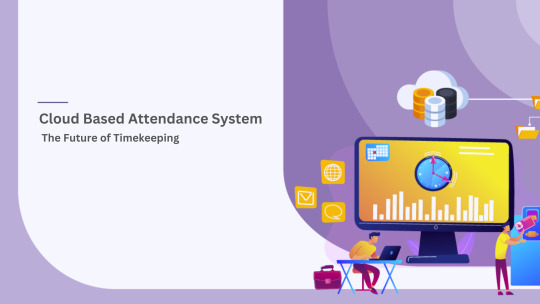
As technology continues to evolve, the future of employee attendance management systems looks promising. The following are some tendencies to be aware of:
Integration with Other HR Systems: Employee attendance systems are likely to become more integrated with other HR systems, such as payroll and project management, to provide a seamless experience for both employees and managers.
AI and Machine Learning: AI and machine learning algorithms can help predict attendance patterns and identify anomalies, allowing businesses to proactively manage attendance issues.
Mobile Apps: Mobile apps are likely to become the primary interface for employee attendance management, allowing employees to clock in and out easily from their smartphones.
Biometric Authentication: Biometric authentication, such as fingerprint or facial recognition, is likely to become more common in employee attendance systems, further enhancing security and accuracy.
The Evolution of Timekeeping Systems
Over the years, timekeeping systems have evolved significantly. From manual punch cards to sophisticated biometric scanners, the way businesses track employee attendance has undergone a dramatic transformation. One of the most significant advancements in recent years is the shift towards cloud-based attendance systems. These systems leverage the power of the cloud to provide real-time attendance tracking and management capabilities, making them a preferred choice for businesses of all sizes.
Benefits of Cloud-Based Attendance Systems
Cloud-based attendance systems offer a wide range of benefits for businesses. One of the key advantages is the ability to access attendance data from anywhere, at any time. This flexibility allows managers to make informed decisions quickly, leading to improved operational efficiency. Additionally, cloud-based systems eliminate the need for physical infrastructure and manual data entry, reducing the risk of errors and saving businesses time and money in the long run.
Future Trends in Employee Attendance Management

The future of employee attendance management is likely to be shaped by several key trends. One such trend is the integration of attendance systems with other HR systems, such as payroll and keyboard tracking with performance management. This integration will provide businesses with a more holistic view of their workforce, enabling them to make more informed decisions. Additionally, AI and machine learning are expected to play a more significant role in attendance management, helping businesses predict attendance patterns and identify potential issues before they arise.
The Role of Mobile Apps in Employee Attendance Management
Mobile apps are becoming an increasingly popular choice for employee attendance management. These apps allow employees to clock in and out using their smartphones, providing them with greater flexibility and convenience. Additionally, mobile apps can offer features such as geolocation tracking, which can help businesses ensure that employees are clocking in from the correct location. Overall, mobile apps are expected to play a more significant role in employee attendance management in the future, providing businesses with greater flexibility and convenience.
In Conclusion
Cloud-based attendance system is revolutionizing the way businesses track and manage employee attendance. With their numerous benefits and future advancements, these systems are poised to become an integral part of modern workforce management.
#Cloud based system#Attendance Monitoring#Employee attendance system#Attendance management system#Cloud based attendance system
0 notes
Text
The Future of Timekeeping: Employee Cloud-Based Attendance System
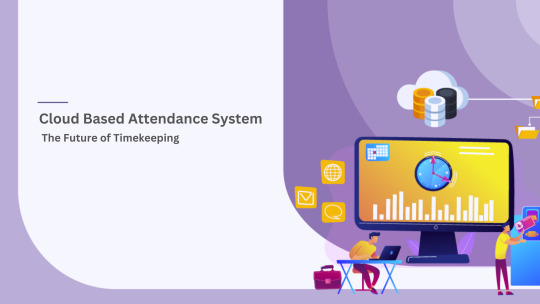
Streamlining businesses' operations and improving efficiency are constantly top priorities in today's fast-paced world. One area that has seen significant advancements is employee timekeeping. Traditional methods of tracking employee attendance, such as manual time clocks or paper timesheets, are becoming obsolete. Instead, companies are turning to cloud based attendance system to manage their workforce more effectively.
What Is A Cloud Based Attendance System?
A cloud based attendance system is a digital solution that allows businesses to track and manage employee attendance electronically. Unlike traditional systems, which require physical infrastructure and manual data entry, cloud-based systems store data securely in the cloud. It means that employees can clock in and out using their smartphones or computers, and managers can access real-time attendance data from anywhere with an internet connection.
Benefits Of Employee Cloud Based Attendance Systems
Increased Accuracy: Cloud-based attendance systems eliminate the need for manual data entry, reducing the risk of errors associated with traditional methods.
Cost-Effective: By eliminating the need for physical infrastructure and manual processes, cloud-based attendance systems can help businesses save money in the long run.
Improved Efficiency: With real-time attendance data available at their fingertips, managers can make informed decisions quickly, leading to improved operational efficiency.
Enhanced Security: To safeguard private employee data, cloud-based attendance solutions provide strong security features including authentication and encryption.
Remote Access: Managers can access attendance data from anywhere, making it easier to manage remote or distributed teams.
The Future of Employee Attendance Management System

As technology continues to evolve, the future of employee attendance management systems looks promising. The following are some tendencies to be aware of:
Integration with Other HR Systems: Employee attendance systems are likely to become more integrated with other HR systems, such as payroll and project management, to provide a seamless experience for both employees and managers.
AI and Machine Learning: AI and machine learning algorithms can help predict attendance patterns and identify anomalies, allowing businesses to proactively manage attendance issues.
Mobile Apps: Mobile apps are likely to become the primary interface for employee attendance management, allowing employees to clock in and out easily from their smartphones.
Biometric Authentication: Biometric authentication, such as fingerprint or facial recognition, is likely to become more common in employee attendance systems, further enhancing security and accuracy.
The Evolution of Timekeeping Systems
Over the years, timekeeping systems have evolved significantly. From manual punch cards to sophisticated biometric scanners, the way businesses track employee attendance has undergone a dramatic transformation. One of the most significant advancements in recent years is the shift towards cloud-based attendance systems. These systems leverage the power of the cloud to provide real-time attendance tracking and management capabilities, making them a preferred choice for businesses of all sizes.
Benefits of Cloud-Based Attendance Systems
Cloud-based attendance systems offer a wide range of benefits for businesses. One of the key advantages is the ability to access attendance data from anywhere, at any time. This flexibility allows managers to make informed decisions quickly, leading to improved operational efficiency. Additionally, cloud-based systems eliminate the need for physical infrastructure and manual data entry, reducing the risk of errors and saving businesses time and money in the long run.
Future Trends in Employee Attendance Management
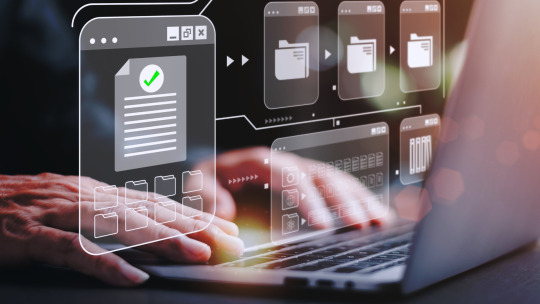
The future of employee attendance management is likely to be shaped by several key trends. One such trend is the integration of attendance systems with other HR systems, such as payroll and keyboard tracking with performance management. This integration will provide businesses with a more holistic view of their workforce, enabling them to make more informed decisions. Additionally, AI and machine learning are expected to play a more significant role in attendance management, helping businesses predict attendance patterns and identify potential issues before they arise.
The Role of Mobile Apps in Employee Attendance Management
Mobile apps are becoming an increasingly popular choice for employee attendance management. These apps allow employees to clock in and out using their smartphones, providing them with greater flexibility and convenience. Additionally, mobile apps can offer features such as geolocation tracking, which can help businesses ensure that employees are clocking in from the correct location. Overall, mobile apps are expected to play a more significant role in employee attendance management in the future, providing businesses with greater flexibility and convenience.
In Conclusion
Cloud-based attendance system is revolutionizing the way businesses track and manage employee attendance. With their numerous benefits and future advancements, these systems are poised to become an integral part of modern workforce management.
#Cloud based system#Attendance Monitoring#Employee attendance system#Attendance management system#Cloud based attendance system
0 notes